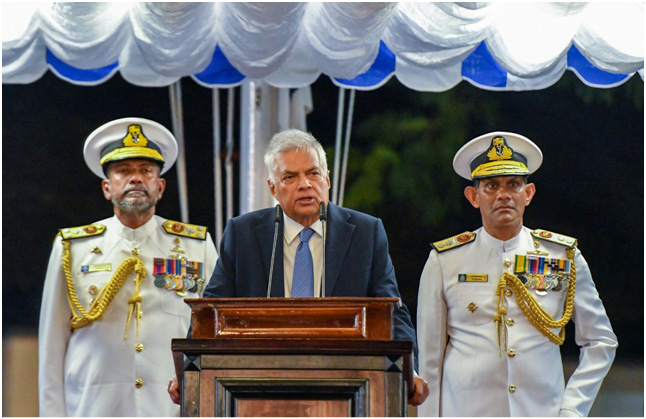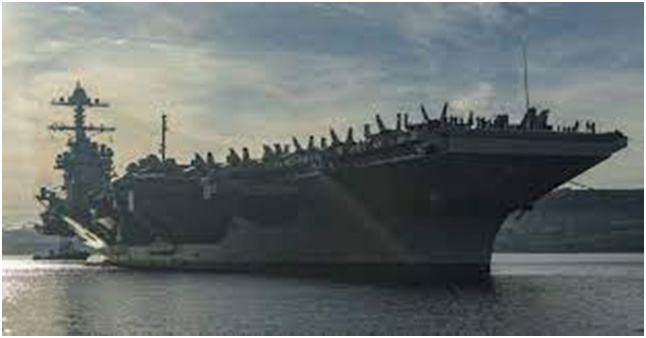Sri Lankan President Ranil Wickremesinghe zealously announced that his government would deploy the Sri Lankan Navy in the Red Sea to defend the trade ships from Iranian-backed Houthi rebels in Yemen. Sri Lanka’s entry to Operation Prosperity Guardian becomes crucial as the island nation is the first country from the South Asian region to join the US-led military campaign against the Houthi rebels. The military initiative started by the US in December 2023 has not received a favourable reception from the traditional US allies regardless of the US’s plea from continental supporters like Italy and Germany. This lethargic response stemmed from the traditional European allies that have appalled the US, which seems to be the obvious cause for America’s interest in other countries. In the backdrop of a situation that underpins an alarming threat to the global trade network, the Sri Lankan Navy’s entry into the Red Sea deserves to be examined in depth.
The valour of the Sri Lankan navy in sailing across the international water has a history that dates back to the epoch of Parakramabahu the Great, a Sri Lankan monarch in the 1st century AD, who deployed four vessels to attack Burma. Apart from these historical antecedents, the blue water capability of the Sri Lankan navy was visible when two Sri Lankan warships went to the high sea in search of LTTE vessels. The successful mission carried out by the Sri Lankan Navy during its ferocious armed conflict with the LTTE in 2007 was one of the notable instances that showed the combating capability of the Sri Lankan Navy on the high seas.
From its modest inception, the involvement of the Sri Lankan navy in warfare has undergone many decisive changes. When the civil war began in the early 80’s conventional tactics of the Sri Lankan navy were outmatched by the naval wing of LTTE known as the “Sea Tigers”. The period the Sri Lankan Navy engaged in combat with the Sea Tigers on the asymmetric ground eventually transformed the nature of the navy into a sophisticated force with the ability to master asymmetric warfare at sea. There were salient lacunas that dogged the capability of SLN such as its inability to fathom the naval tactics of the Sea Tigers. However, the Sri Lankan Navy carefully addressed these drawbacks in the later stage of the IV Eelam war and SLN emulated the practices of LTTE by embracing the arrow boats concept, which ensured formidable success for the Sri Lankan Navy.
In the aftermath of the civil war, the Sri Lankan Navy along with a local private security company sought its chances in providingsecurity in the international maritime, which was followed by selling nine arrow boats to Nigeria. The innovation of the set of small boats, commonly known as “Arrow Boats” intended to be effective in the Sri Lankan Navy’s continuous sea battles with the LTTE. The mastery attained by the Sri Lankan Navy in asymmetrical warfare and its indomitable success in crushing the LTTE floating armouries on the high seas proved the navy’s capacity beyond the mere defence force of a small island. Furthermore, the maritime doctrine published by the Sri Lankan Navy in 2020 pointed out the cardinal elements that the Sri Lankan Navy should adopt in nurturing the stability at sea, which included making an equilibrium among the pillars such as the Grand Strategic, Military Strategic, Operational and Tactical.
Given all these competencies owned by the Sri Lankan Navy, its direct involvement in US-led Operation Prosperity Guardian seems to be a wider opportunity for Sri Lanka to project its status among the global key players. Nevertheless, the fact that the Sri Lankan Navy needs to leverage its strength to an international naval operation creates some perplexing effects as it can drag the country to the complex geopolitical chaos in the Middle East. It is beyond dispute that Iran plays a proxy war against the West by backing Houthi rebels in Yemen, in which Iran anticipates undermining Israeli war efforts in Gaza without a direct escalation. When the US launched Operation Prosperity Guardian against the Houthis, Iran continued its determined defiance by providing sophisticated missiles and drones to Houthi rebels. Traditionally, Iran is a friendly country towards Sri Lanka as the bilateral relations between the two states remain solid based on trade and cultural links. Also, Iran is one of the major markets for Sri Lankan tea and Sri Lanka exports 5% of its tea to Iran. Thus, the genial nature of the existing relations between the two countries can be marred by Sri Lanka’s entry into the Red Sea, which should be a major concern for Colombo.
From an operational point of view, responding to the growing Houthi menace will require more stringent naval capabilities. To perform in a volatile region, the capabilities of Offshore Petrol Vessels (OPVs) of Sri Lankan Navy require new installations that include thermal cameras and stabilized platforms as the competing non-state actor in the Red Sea is a formidable foe, who uses much more advanced weapons like anti-ship missiles and drones. Despite the perplexing nature of Sri Lanka’s entry into Operation Prosperity Guardian, it would ensure a closer strategic partnership for the Sri Lankan navy to build with the US. Under the theme of “maintaining a free and open Indo-Pacific”, both the US and Sri Lanka have embarked on a series of training sessions in the recent past. The two ships that have been proposed for the Red Sea Operation, SLNS Gajabahu and SLNS Vijayabahu were gifted to Sri Lanka by the US in the year 2019, which suggests that the Sri Lankan Navy’ engagement in the US-led operation is not entirely surprising as it is a reflection of a strategic partnership.
In assessing both the arguments for and against Sri Lanka’s decision to send its Navy to participate in Operation Prosperity Guardian, the nuanced picture for a moderate analyst is to affirm the ability of the Sri Lankan Navy as a blue-water force. It is reasonable to assume that the operational skills performed by the Navy in the past in defeating one of the most ruthless terrorist groups like LTTE may boost the chances of the Sri Lankan Navy and it will increase the status quo of the Sri Lankan Navy. Yet the policymakers in Colombo should be well aware of the possible outcomes stemming from this grandiose naval projection in the Red Sea Operation and how they would shape Sri Lanka’s future in the long run.






